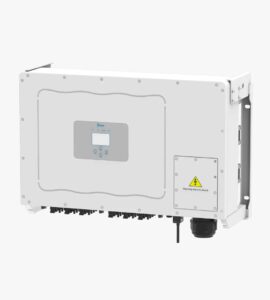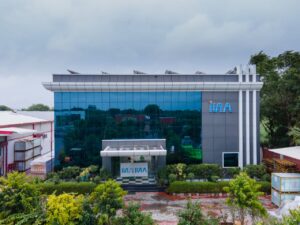Dr. Patel Badari Narayana
Founder Director – Green Life Energy Solutions, Hyderabad | Associate Professor– MGIT, Hyderabad
Solar PV industry is entering into its new era with the advent of bifacial PV Module technology. Bifacial modules have high power density, high energy yield and improved low radiation performance. The installations with bifacial modules will have attractive LCOE and are suitable for ground mounted installations. Bifacial PV modules have a transparent rear side and the cells can absorb radiation from both front and rear sides.
Energy yield gain of 30% is possible through bifacial technology by increasing the height of installation by 1 Mtr, maintaining the albedo coefficient up to 50% and installing the modules on a highly reflective surface. The generation yield of the solar PV plants is improved especially during winter months. For photovoltaic modules, solar energy gain depends mainly on site configuration and surface albedo. Performance of a bifacial PV module is a function of incident solar radiation, tilt angle, elevation above the ground and azimuth angle. Also, PID mainly influences the Fill Factor of the solar module or cell due to reduced shunt resistance. Hence, bifacial modules have reduced PID risks, high durability as both sides are UV resistant. Bifacial PV modules are of made of p-PERC, n-PERT and Si Hetero junction types of solar cells.
| Solar PV Module Technology | Cell Efficiency |
| Monofacial Monocrystalline | 18% + |
| Monofacial Polycrystalline | 15–17% |
| Monofacial Thin-Film | 11–15% |
| Bifacial Monocrystalline | 20% + |
Taking a look at a commercially available Mono PERC bifacial module, some interesting conclusions can be drawn. A 375Wp bifacial module has improved module efficiency with 18% front side and 14% rear side with an Imp of 19 Amperes. Presently IEC 61215 and IEC 61730 holds good for their certification and still a complete process of testing is to be evolved. Figure 1 shows the daily average power output of a bifacial solar PV module. With effective tracking, these modules provide 200% more power than mono PERC modules.

Energy yield is more with improved low irradiation performance and low temperature coefficient. Product warranty from the eligible manufacturers is 30-year with annual power degradation of less than 0.45%. The balance of systems (BoS) cost is also reduced by 15%. Most of the present day manufacturers provide their own clamping systems to reduce the installation hurdles. In Fig 2 a commercially available bifacial solar module warranty guidelines are shown. This has an increased advantage for both installer and the consumer in achieving a better LCOE and reduced payback.

I-V curve comparisons between bifacial and monocrystalline regular solar PV module indicates that their performance is similar under various load pattern. Bifacial solar panels are compatible with both string and micro-inverter solar energy systems, and can be installed with all of the existing tracking mechanisms.

Global market expansion of bifacial PV modules is expected to reach 30% of its share by the year 2027. Manufacturing cost of Mono-PERC modules is 0.32 USD per Wp whereas bifacial modules in 0.3202 USD per Wp. Bifacial modules along with tracking for megawatt solar parks are going to increase the energy yield by 27% with a LCOE of 1.09 USD per watt. Building-integrated photovoltaics (BIPV) are photovoltaic based materials that are used to replace the traditional building glass in future. Conventional building materials for building envelope such as the roof, skylights, or facades are going to be recommended with bifacial modules in the near future. This technology will be a clear winner in upcoming years, under the right conditions bifacial modules generate more power with less equipment and have improved efficiencies.
Kindly Contact for more info
Dr. P. Badari Narayana | M.Tech ( Energy Systems), P.hD.
GREEN LIFE ENERGY SOLUTIONS
Office: H. No. 10-3-528, LIGH- 171/2RT, Ground Floor, Vijaya Nagar Colony, Near Andhra Bank, Masab Tank, Hyderabad (Dist), Telangana, India. PIN:500057. Phone: 040-23344936,
Contact: +91-7013835309/8897075990






